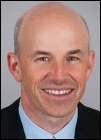Re: Walmart Health: Just had a great dental visit this morning, which was preceded by helpful reminders from Epic, and…
From the Consultant’s Corner 8/17/11
Beyond A/R Days: An Integrated Approach To Revenue Cycle Performance Management
Many physician practices make the mistake of measuring revenue cycle performance with a single number: accounts receivable (A/R) days. While no one will argue that this is an important metric, it doesn’t tell the whole story.
For a realistic, meaningful understanding of financial performance, providers must examine multiple key performance indicators and appreciate the relationships among them. In fact, an isolated number can be worse than meaningless — it can be deceptive.
For example, A/R numbers on their own may look perfectly respectable, but if it takes three weeks to fix coding or charge entry errors so the A/R “clock” can start, your revenue cycle is really 21 days longer than your measurement shows. Similarly, a 10-day lag for a charge to make it into the system or a backlog of charges awaiting missing data also affect your overall revenue picture.
It takes an integrated approach to effectively manage and improve financial performance. Your billing report card should include a broad range of metrics and indicators, such as:
- the number of days it takes to get charges into the system;
- how long it takes to produce the claim form;
- how thorough you are at capturing charges for all services rendered.
Monitor charges on a monthly, year-to-date and annual basis and then make sure to compare them to previous years to track practice productivity. But don’t forget to consider whether charges have increased. For example, if payment is up 10% over the previous year but charges are up 50%, the picture isn’t so rosy.
Other significant numbers to track include:
- A/R days over 90 (at risk for denial based on timely filing limits).
- the number of days between the date of service and the date the charge is entered in the system (sometimes called a charge log).
- the dollar amount of charges sitting in claim edits because they’re missing data, the procedure code doesn’t match the diagnosis code, or other errors.
- claim rejection percentages.
Billing and revenue cycle directors and managers should follow these numbers daily, present them to C-level executives once a month, and be willing to educate the executive audience about their relevance and relationships.
It’s also a good idea to measure your benchmarks against those of your peers at least once or twice a year, or ideally, each quarter. Comparing your numbers relative to those of top performers will identify areas for improvement as well as deficits that warrant deeper review.
Effectiveness and efficiency both count
These measurements and analyses obviously take time, and in a busy practice it’s easy to postpone them. But just because you’re satisfied with your A/R days doesn’t mean your organization’s financial performance can’t improve.
Keep in mind that there are two distinct factors driving revenue cycle management: effectiveness and efficiency. Effectiveness is the amount of money a practice collects. Efficiency represents the cost of collecting it.
Even if you can’t move A/R days from 36 to 35, for instance, you may be able to make your revenue cycle more robust by shrinking the time to get a charge into the system, reducing claim rejections, or other cost-cutting measures.
Especially with recent government initiatives and incentives for electronic health record (EHR) adoption, regular monitoring of the revenue cycle is becoming easier and more imperative. More than ever, tracking and monitoring a robust suite of key metrics is essential to developing a realistic picture of financial performance.
Rob Culbert is founder and president of Culbert Healthcare Solutions, a professional services firm serving healthcare organizations in the areas of operations management, revenue cycle, clinical transformation and information technology.


Rob – I think you hit on a few good points here – Although I would say this is just part of the overall rev-cycle process. I think you might want to add – front-desk workflow optimization to this (like outstanding dollars to be collected from previous visits), charity-care workflows/reporting (to show taxing organizations what value the healthcare org provides the community), enrolling the indigent populations in government programs) etc.
Again thanks for your valued input!